At the end of the last entry I yelled myself hoarse claiming that there was this transportation device that cars made go the way of the Dodo. These things were everywhere for thousands of years, but I didn’t want to saddle an article that was already over 7k words with any more bloviation. I got colt feet and said neigh to that.
But seriously, these things were omnipresent through history, to the point of being the mane form of transportation due to their unbridled superiority. Despite this, a stable of the traffic bugcreatures is that they seem to have never herd of them. I know you’re whinnying with anticipation, chompin at the bit, and rearin’ to learn what mystery transportation devices I’m talking about. You don’t need to wait furlong, so rein it in.
Turns out I found a picture of them!

And this one’s a real night-mare.

Yes, horses, the things that the traffic antifas never mention when they do their gay bullshit about how cars took over cities that were apparently always for homosexuals walking to organic dildo conventions. Think I’m exaggerating?
Car traffic is really inefficient, blows lots of part –
Dear God, I’m sorry but I can’t let all these idiotic, snuck-in premises go unchallenged. Cars being “inefficient” is something that these clowns repeat over and over again. He doesn’t explain what this even means, and gives no sources to prove this other than Wikipedia, the favourite source of all pseudo-intellectuals. On Wikipedia I could only find this graph.
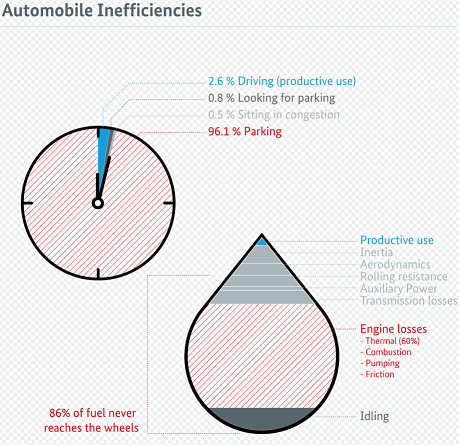
I cropped it, but at the very bottom of the infographic they have two sources given.

The first is a study by Stefan Heck and Matt Rogers from 2014. I gave it a quick search and couldn’t find a direct link to this study. Of course, I would have needed an actual page number for the specific claim, but why be a real intellectual and provide actual sources when you can make pretty infographics that use sources the same way that fiction books use “George R. R. Martin said it’s a ****ing sick fantasy book and is totally rad,” or “New York Times bestseller.”

Turns out you can find the book here,. I didn’t care to read it in part because I found the McKinsey article they were referencing, and the authors seem strangely familiar.

Yes, the Wikipedia infographic’s two sources were just the same two guys. As if to parody themselves, the McKinsey site has the same info on a different infographic with, you guessed it, different sources.

This means that the source is not actually Stefan Heck, Matt Rogers or McKinsey, despite what Wikipedia would have you believe. If your entire identity is being a snarky midwit, maybe consider not using Wikipedia infographics as a source for highly technical and controversial issues.
But in this case it doesn’t even matter, since the two claims are complete and utter non-sequiturs. First of all, they whine about cars being parked for 96% of the time, as if this is a bad thing. That’s like whining about toilets being “inefficient,” because they only have people using them for 0.2% of their lifetimes. Get a load of that inefficiency! We need to ban toilets because SMaRt pEOpLe understand that things must have arbitrarily high usage rates in order to have a reason to exist.

The fact that cars are extremely convenient, and just sit there consuming no energy until you need them is a mark in their favour. This is also true for bicycles, which often just sit in a garage for the entire duration of winter. Every bicycle I have owned easily spent less than 1% of its lifetime being ridden, something that works out to just less than 15 minutes averaged per day. But apparently cars must have arbitrarily high usage rates, because reasons.
They then use a totally different definition for efficiency in the next claim, which is that the chemical energy released by combustion doesn’t “reach the wheels.” Most of the rest doesn’t count because of wind resistance (what???) and inertia (what????). Only a tiny percentage is there for “moving the person.”
I have zero idea what they are talking about, because inertia by definition requires no energy to change. You can’t possibly need energy to maintain inertia unless there is a force acting in opposition, such as wind resistance. But apparently I’m just too dumb to understand how the laws of physics change when you’re in a car.
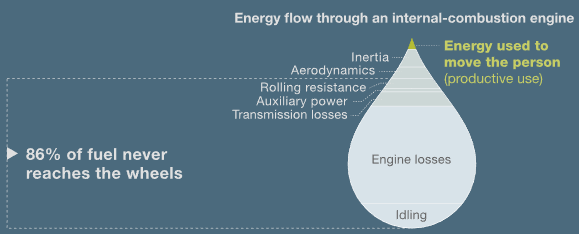
They also include idling, presumably with some ridiculously high estimations for idling time, but whatever. I can easily believe that well in excess of half the chemical energy released through combustion is not translated to motive force even when driving. The problem is that it’s a non-sequitur, and one of the worst examples of an isolated demand that I have ever seen. After all, we can do this MuH iNnEfFiCieNCy bit for every method of transportation. Using this “logic,” let’s ban walking.

You see, the energy that we put into our bodies is inefficiently digested. Some of the calories remain in our waste, with estimations of around 10% losses, depending on the food. But that doesn’t factor in the energy required for your body to digest the food, including peristalsis, and chewing. I’m going to arbitrarily decide that this cumulatively takes precisely half of the energy that we get from food, and then drown anyone in irrelevant sources when they try to fact-check that. For example, go find this article on dragonfly mating that I screencapped.

If you haven’t done that you don’t get to say that I’m wrong. Once you’ve done that, you can read this random study I found from 2003 on the connection between thoughts and muscle power. You have to read the entire study and then tediously explain why it does or does not apply in exactly the way I arbitrarily decide that it does, or my fans will soy out at you and call you a non-intellectual.
Anyway, we then we have the inefficiency of muscular contraction itself. I’m going to make myself sound very smart by regurgitating terms like “generating ATP,” and “anaerobic glycolysis,” before using Wikipedia as a source to claim that human muscle has an efficiency of 20%. So right off the bat, all muscular contractions are just 10% efficient when we work back from the calories ingested.
However, your muscles don’t push you exactly where you want to go. While the wheels of a car spin perfectly in the direction of travel, walking is an inefficient motion, which is why we don’t actually build vehicles like the AT-AT’s from Star Wars. You have to lift your feet up and then down again, while driving them into the ground partially to get traction, as well as use your legs not for motive force, but as counterbalance. I’m going to arbitrarily say that this process is only 25% efficient. So now we’re down to 2.5% total “efficiency.”

But wait a minute, your legs spend most of their time idling. Think about all the time you spend sleeping. Are your legs being productive? No. Are they consuming calories while at rest? You betcha! Cars don’t consume energy while at rest, but your legs do. And this is true for all the times that you are sitting down as well, which you are probably doing right now while we speak.
I’m going to arbitrarily say that legs spend 98% of their time idling, with 1% spent looking for chairs, and only 1% of their time walking or running. This is a totally different and arbitrary definition of efficiency where we go from chemical efficiency to time efficiency, but I’m going to now multiply them together and get a number of 0.025% efficiency for legs. Fucking PATHETIC.
The conclusion is very obvious, provided you’re an intelligent urbanite like myself. Legs are inefficient means of transportation, so you shouldn’t have any.

You might say that blowing off your legs will negatively affect your life. You might even point out that we have a term for people with no legs called “disabled.” Ultimately, you might wonder what the fuck “efficiency,” let alone a constantly changing definition of the word, has to do with transportation in the first place. But that’s just backwards LeGBrAIn thinking. Anyone who advocates for more “walkability,” is just advocating for inefficient means of travel, and we SmARt PeOPlE have decided that we must have ultimate efficiency. No, we’re not going to explain why. No legs for you.
… is a constant source of noise pollution.
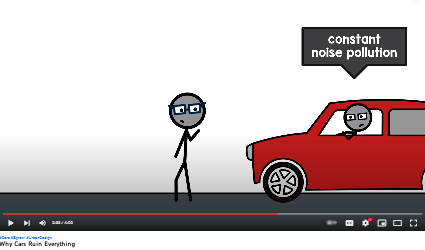
Yeah we’re back to the original video. Sorry for the fifteen hundred word aside. I had to because these people are annoyingly wrong and stupid and it causes me physical pain to let them get away with their bullshit.
And eat so much public space. Places where kids used to play –
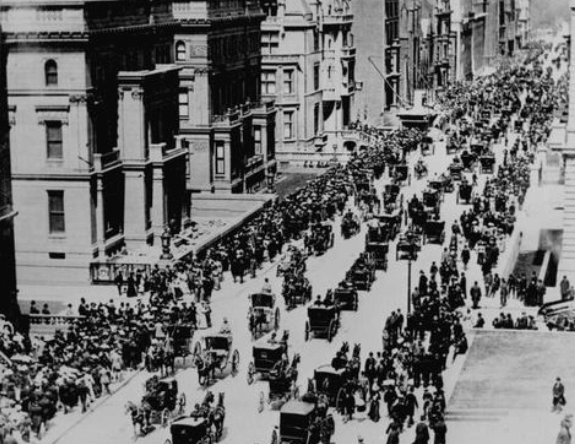
Pictured: toddler nirvana.
Who wouldn’t want their children playing here? I’m sure that no child was ever crushed under the unforgiving iron wheels of a horse drawn carriage, or kicked by a muling Clydesdale. In fact if you look closely you can see literally millions of children playing in this downtown New York street. But then cars had to come along and ruin it all.
– and where people gossiped about that weird smelling neighbour –
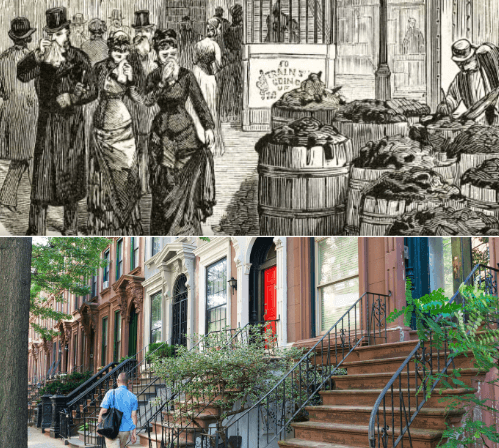
Pictured: citizens gossiping (about the fucking horse manure)
Because who wouldn’t want to come out for some friendly neighbourhood gossip while being surrounded by a metric ton – actually more – of horse manure?
are now reserved for driving and parking.
Noooooo. Why did cars have to come and steal our streets that existed purely for playing and gossiping?
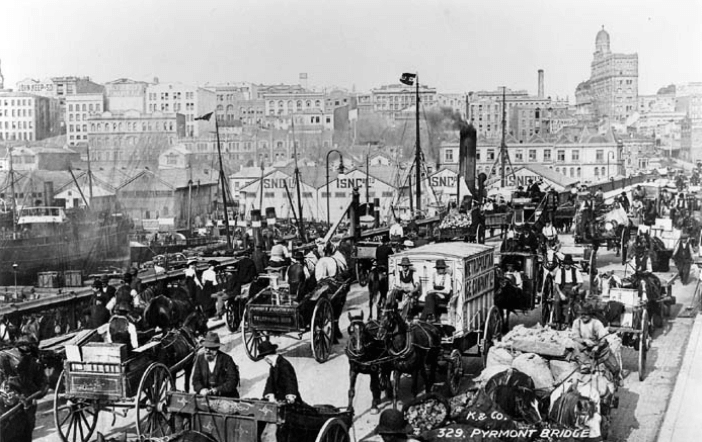
Pictured: streets empty of nothing but children’s laughter.
Why did cars have to GENOCIDE our hekkin walkability like this?
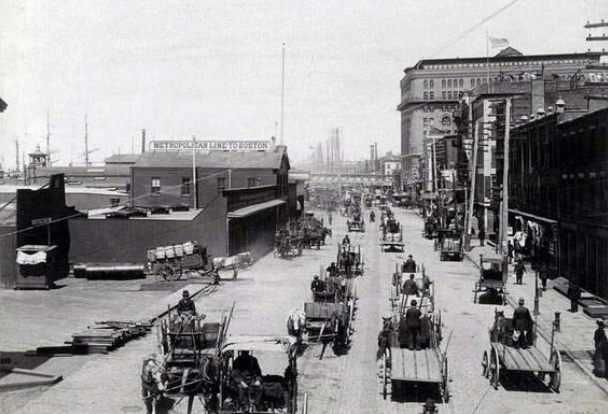
Pictured: complete absence of wheeled vehicles that take up lots of space.
Why did cars have to go and take up so much of our precious downtown real estate with their parking and their wheels? This definitely never happened before cars were invented.
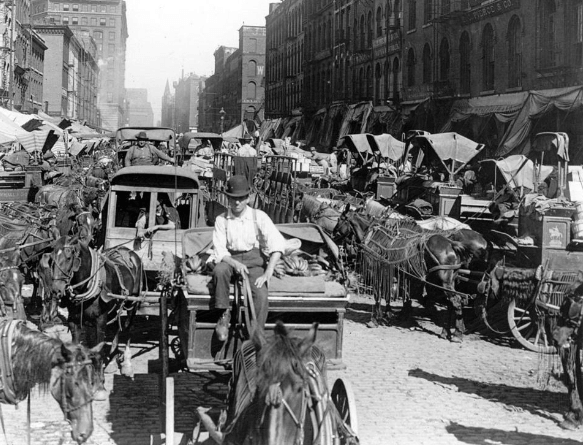
Pictured: zero congestion in this walkability paradise.
Tapakapa, the maker of this video, proceeds to whine about global warming, and never once mentions horses. But that’s just one video, let’s try another. Jason Slaughter, aka Not Just Bikes, is probably the most respected LOLcow in the urbanite e-community. Let’s see what he has to say about cars in cities, starting from the appropriate spot.
Reading this chapter [of Curbing Traffic by Melissa & Chris Bruntlett] reminded me how annoyed I get when suburbanites say they hate the city when it’s noisy and polluted, when the reason it’s noisy and polluted is because of the cars that suburbanites insist on driving into the city.
I guess they should just take their horse and buggy’s into the city then so they can shit everywhere and still make a ton of noise.
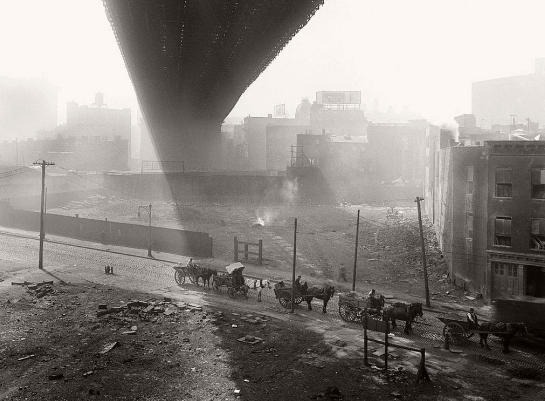
NotJustBikes gives himself an out here. He whines that speed limits should be 30kmph inside of cities – no really – because tire noise holocausts his state of mind at higher speeds. He also whines about vehicles that are designed to be overly loud, such as some types of motorcycles, which is a legitimate complaint. Having said that, he whines in the most annoying way possible.
So given all of the health and social problems created by loud motor vehicles, it’s reasonable to ask, why do we still allow them in cities. But in order to avoid being too one sided here, what are some of the arguments against banning loud vehicles from our cities.
Me like car go vroom vroom. *Makes farting noise* Hmmm. Yeah that’s a tough one. I can see why so many cities have trouble with this decision.

It’s amazing how these people can be so obnoxious that it’s tempting to spend our taxdollars putting extreme noisemakers in downtown areas just to fuck with them. Imagine putting one of these things next to Jason’s apartment pod.
Not Just Bikes does have this video, explaining how Toronto got “addicted” to cars.
I watched the entire thing on 2x speed, and “because people were tired of their city smelling like manure and cars are awesome,” is not mentioned anywhere. But Jason Slaughter usually straddles the line between being wrong and being utterly laughable. I’m looking for something better, something that’s so dumb that it’s high quality entertainment for the deserving Goyim. Who could be this outrageously stupid?

This seems promising.

He even does the “Ben Shapiro is a natzee” bit. I think we’re getting warmer.

And he’s accusing PragerU of being too mean to Jews (we’ll get there in the next piece). Dear diary, I believe we have hit jackpot.
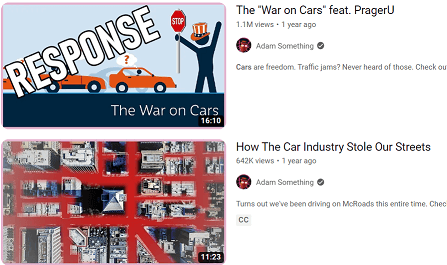
Let’s see what “Adam Something” has to say about the “streets as toddler’s playgrounds,” bit.
You know you’re off to a good start when you hear him say:
Streets were for people still, the vast majority of people.
While showing a picture of a hovel that literally has rail tracks running along its entire length.

Our streets used to be places of public congregation, with additional transportation.

Adam Something
One of the weirdest recurring arguments from the traffic troons is that streets were never built for transportation except as secondary use. I’ve seen this idiotic argument repeated by these people in a lot of places, including above, but never this purely.
Streets were places for us to socialize, to talk, walk, drink, eat, shop, hang out. In other words, to live our lives.
This was the case for thousands of years, until about a hundred years ago, the early twentieth century.
The middle of the street used to be an amazing place to hang out, eat, socialize, and LiVE oUr LiVeS back in the late 19th century. Who wouldn’t want to be socializing and playing soccer right in front of these draft horses or on the tracks? It certainly wouldn’t be dangerous, and no one would be mad at you, because roads have never been predominantly things that exist to do the work of transportation. Roads are places to have gay fuckparties, and always have been.
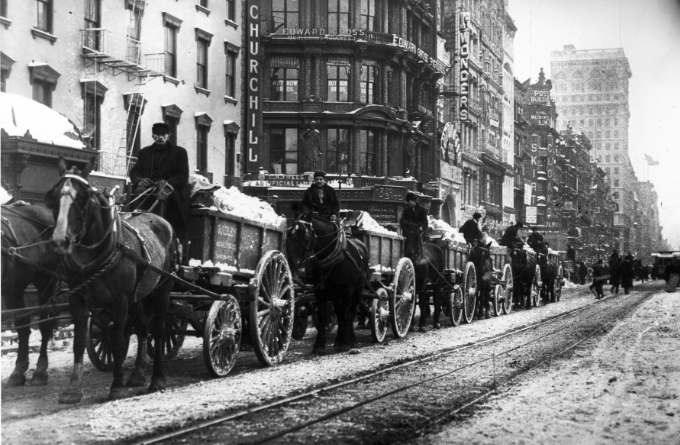
Streets were literally filled with laughing children until the invention of the automobile, only occasionally being used for transportation. But then pedestrians humans became second class citizens, and were forced to the side of the street. How could the people come to tolerate their walkability being holocausted in this way?
*Starting at 3:58*
And that’s when players in the automobile came up with an idea, an idea that was just as insidious as it was genius and effective.

No. I don’t think I can handle this Adam Something. I feel sick to my stomach right now.
Their targets became your grandparents.

T-targets? That’s how you refer to the things you want to shoot, not innocent people.
At that point they were school-age still, and they started receiving a new type of education, courtesy of the auto-industry and their endless benevolence.
Benevolence from the auto industry?!

Wait, he means that, like, they actually were not benevolent. This guy is so effing clever.
For the sake of their safety, children were taught to always look around before crossing the road.

I have never heard of anything so evil. Imagine wanting less murdered kids. Although I do have to say that my first idea, were I an evil road tycoon, would probably have not been to reinforce the notion that cars are extremely dangerous to impressionable young children.
Well apparently it worked, which is why people started using cars. This is literally what these people believe, I’m not making it up.
Because they are the ones who have to stop for traffic, and not the other way around, and that’s because streets belong to cars, and not people.

Also, can I just say that I really love the complete lack of sources and totally unquantified arguments. I really enjoy it when people create Just-So stories about how children were indoctrinated into wanting cars because their teachers told them to look both ways before crossing the street one time. But it’s even better when they provide literally zero evidence for their retarded theories.
And so entire generations of people grew up thinking this was the new norm.

This guy is almost too much of a LOLcow. I can’t help but be distracted and want to make fun of everything that he says, because he is the snarky midwit personified. But I have to jump back to the beginning of his video to keep this under 7k words again.
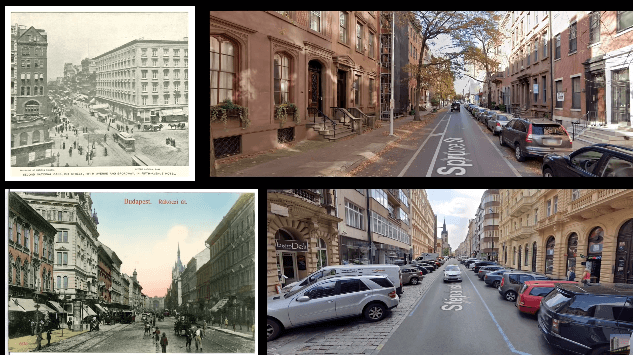
This [on the right] is a typical street in the developed world in the 21st century [compared to supposedly walkable older urban street on left]. But how come urban planning this radical could become so commonplace?
Wait, what?! Radical!?
Yes. What you see in front of you right now is the height of radicalism. It’s a type of insanity that we all just kind of got used to over the years, and never really stopped to consider its implications. It’s also a very recent development, yet we all treat it as if it’s some eternal status quo.
Now, do you see what I’m talking about?
Oh my gosh I have no idea. Please inform me guy who thinks that cars beat trains because children were brainwashed into thinking cars are dangerous.
Let’s do it this way. For you as a living, breathing human being red is off limits, only green is for you.
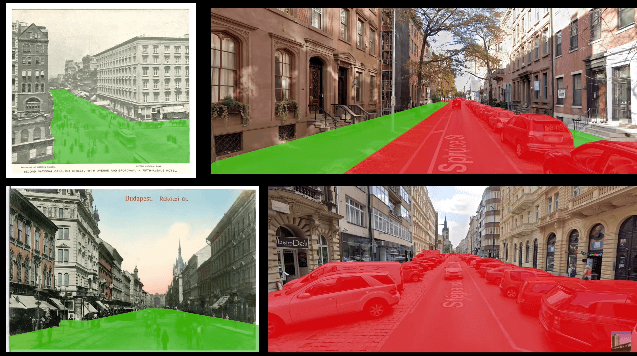
In an urban settlement, built for human beings to live, you as a human being, are banned from most of the public spaces.

I’m banned from the middle of a busy road in an urban settlement?! How am I supposed to live if I can’t just blunder into the middle of the street on a whim? Am I also banned from entering the sewers, or the power stations? That’s public space too and – oh okay I am banned from there. Fine, but that doesn’t count.
Sheesh. What’s next, banning me from randomly entering people’s houses? If there are any more restrictions put on me I won’t make it to the next gay disco.

But at least these are consistent with their support for giving the people access to public spaces and not throwing them in jail…
Think about that for a moment. Let that sink in.

I’m still processing not being able to play in traffic. Give me a moment. Make that two moments, Adam. I just can’t get over not being allowed to do my interpretive dance routine in front of an oncoming semi-truck.
Inside your city, you are banned from using most public spaces. And the only way you can use those spaces again is if you purchase a motor vehicle. And this is something very new. For as long as human settlements have existed our streets used to be places of public congregation with additional transportation.
Some of you CArBrAInS might be tempted to point out that you can walk on the sidewalk, which is not coincidentally a place that the car is banned. But you’re just too dumb to understand that sidewalks are car infrastructure, and therefore bad.

They really only started being built after teh eebil cars DESTROYED our beautiful mixed usage roads.
What I’m saying is that sidewalks are a very recent thing, a way to ensure safety of pedestrians from the motor vehicles which started becoming frequent in the past 200 years.
Before the MOTOR VEHICLES which are NOT HUMAN existed the HUMANS could walk wherever they want, with nary a sidewalk in sight.

Ancient Pompeii
Check out this road from Ancient Pompeii. See how there’s totally not a sidewalk right there?
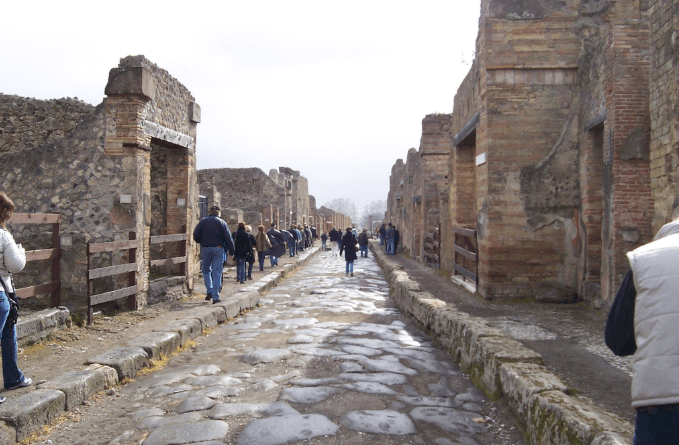
Do you see how there are just like, zero sidewalks anywhere in sight?
 It’s just amazing how there are no sidewalks to be seen anywhere on these ancient roads. Literally not one.
It’s just amazing how there are no sidewalks to be seen anywhere on these ancient roads. Literally not one.
When we build a sidewalk along a busy arterial, or put in a traffic signal or build a pedestrian overpass, we may call it “pedestrian” infrastructure, but the only reason it’s actually needed is because of the presence and primacy of cars. And its purpose is primarily to benefit cars, speeding car travel, by freeing them from the need to pay attention to or yield to pedestrians (or to only have to do so under strictly limited conditions). If a pedestrian crosses outside a sidewalk, or against a light, the law routinely exempts vehicle drivers from any penalties from hitting or killing them.
“Pedestrian infrastructure” is an oxymoron. In a place that’s hospitable to people and walking pedestrians don’t need separate “infrastructure”—they can use the streets as a place to walk, just as humans have done for the several thousand years in which there were cities but no cars.
That’s right. For thousands of years there was no such thing as “pedestrian infrastructure.” They literally didn’t exist just like horses and carts didn’t exist. There is no evidence of any –
[In Ancient Rome] There were also roads that meshed pedestrian walkways with roads for carts, carriages, and animals. Pedestrians could walk on the outside of the faster moving horse and mule drawn traffic (Thompson 21). This was the first real use of the modern sidewalks that separated the different kinds of traffic that was seen in the city or edges of towns.
Most public roads would have width for at least two carts to pass each other and would be covered with paving stones. Alongside, there would be a path of less durable rock or gravel that would allow pedestrians to safely walk without fear of crossing paths with other traffic. There was usually a height difference between the road and the path as well as occasional blocks that allowed for pedestrians to cross the road or mount a horse (Cartwright). This way there was a physical barrier that prevented the accidental cross of traffic.
In reality people have been demanding sidewalks be built for thousands of years because they want safety from the wheeled vehicles pulled by the horsies. The people with the horsies wanted pedestrians separated from them for everyone’s safety and because they slowed them down. This garbage about streets being areas that gay children shared dildos in is ahistorical nonsense. Streets, especially major urban thoroughfares and the ancient equivalent of inter-city highways have always been about transportation first and foremost.
Below we have an ancient pedestrian crosswalk. It was designed to let people cross the streets full of horse manure that they otherwise were disallowed or discouraged from using.

In fairness, I’m not sure this street had wheeled vehicles.
GeT a LoAD of tHis CaR InFRaStruCtuRe.
A brief, but factual History of Transportation
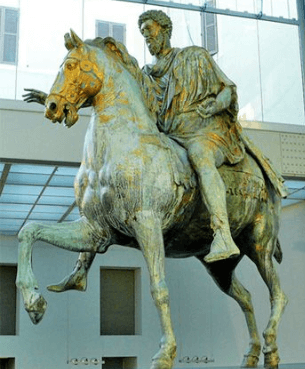
It used to be that people walked everywhere. But this sucks, so people decided to hop on the cute creatures that are 75% feces by mass because they’re faster, and can carry hundreds of pounds of additional equipment for enormous distances. These are called horses.

But soon people figured out that you can hook up the horsies to things with wheels, and the horsies are really good at pulling them. A wheeled cart is vastly superior to walking with something heavy on your shoulder, and the horses are much better at pulling wheeled vehicles compared to humans.

Of course it wasn’t entirely horses, sometimes we used oxen, particularly on farms where they are already there. And sometimes we used a common variant called a mule, which is the sterile offspring of a male donkey and a female horse. They live longer than horses, but are smarter and more obedient than donkeys.
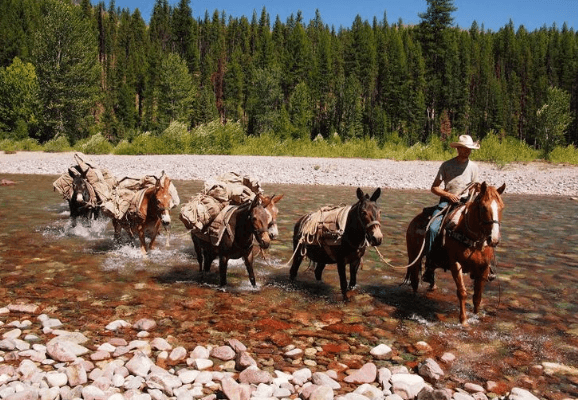
Still occasionally have advantages in some terrain over ATV’s.
The point is that animals that weigh thousands of pounds are often much better at doing manual labour than people, which is why we used them for thousands of years. We’ve been hooking them up to wheeled carts for thousands of years as well. And we’ve been separating them from the pedestrians since long before the birth of Christ.
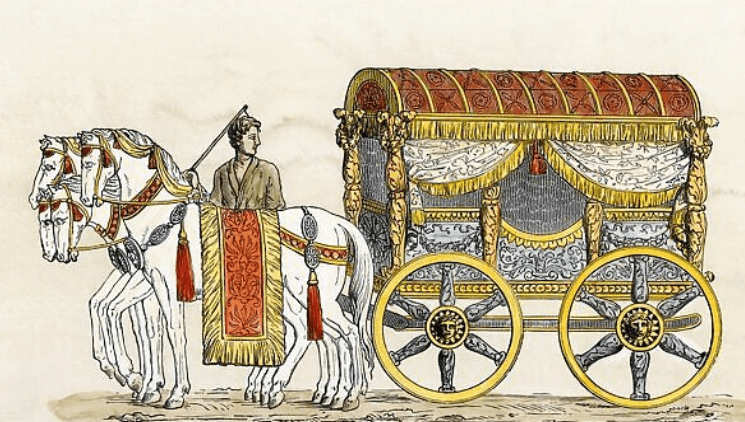
A horse by itself is quite flexible. It can walk almost anywhere a person can walk, while transporting more goods. A horse, or team of horses pulling a cart is less flexible, especially in the days before suspensions and inflatable rubber tires, but the massive advantages over human labour are obvious. For routes where the horses had to trot over muck it could be difficult for them to pull something with wheels.

In some cases, as early as 1550, wooden rail lines were laid down so the horses could pull heavy loads through muck. A person and individual horse can walk anywhere. A horse and cart can go anywhere there are roads, and change directions fairly easily. A horse on a rail can only go up and down one path, and making them change paths is expensive and difficult. This was the ultimate in inflexibility, but was worth it for horses that only made one very repeatable trip, which was often true for cargo, and occasionally for passenger rides.

Steam powered locomotives were invented in Great Britain in the late 1700’s, early 1800’s. There were many people involved, but the Englishman Richard Tevithick is usually credited as the inventor of the steam locomotive. It’s not hard to see why he was interested. As the son of a mining captain he saw the steam locomotive as the better version of the rail-limited horse. After all it has the same limitations, but provides drastically more pulling ability.
For the next roughly hundred years we had the century of the train. Trains are horribly inflexible just like rail-horses. In order to change destinations they need new point to point tracks to be built. You can’t build anything like a traditional connected road network, because they can’t turn without dedicated turntables or switches. This keeps the total number of destinations you can have extremely limited.
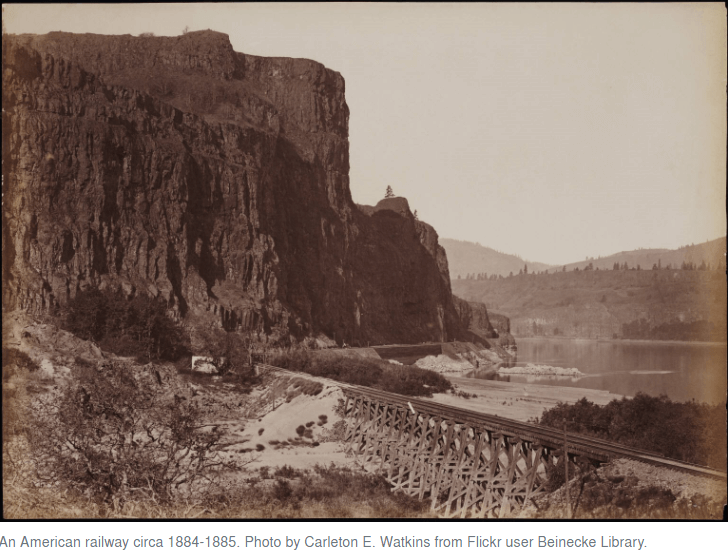
But since trains were so outstanding at moving large amounts of cargo compared to horses much of the intercity traffic that was previously dominated by horse drawn freight was taken over by trains. After all, a lot of traffic is predictable, and if your alternative is horses or walking, trains can be pretty good.
Of course, due to the impossibility of door to door shipping done by trains, you still need horse drawn carts to get the goods to their final destination. But if you’re traveling 7,000 kilometers across the country that’s a fairly negligible concern.
Since trains had all these advantages over horses, why have they declined so much from their peak?
Iowa State University Institute for Transportation:
Railroads took off in the United States because cars and airplanes hadn’t been invented yet! Trains served as the most important mode of transportation during a period of time called “The Golden Age” of railroads, which lasted from the 1880s until the 1920s.
So, what happened? In the early 1900s, cars and airplanes were invented, and their popularity grew quickly within the United States. After the 1920s, cars and planes would supersede trains as the primary means of transportation.
Automobiles are just the objectively better version of horses. That’s why we can go from pictures like this, when New York was supposedly a walkability paradise and children played in the streets or something.

To pictures like this just a few years later, post walkability holocaust. It’s so odd. It’s almost like the automobiles all replaced the horses. But this can’t be true because the traffic troons have repeatedly told me that automobiles replaced streets everyone walked on constantly.
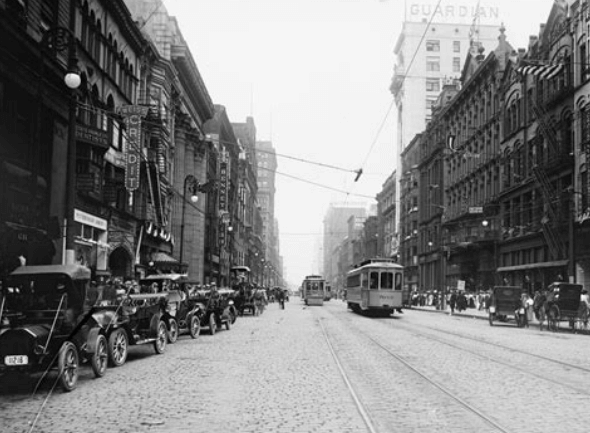
Do we really need to come up with conspiracy theories to explain why people liked having the power of dozens, if not hundreds of horses at their feet, to be used on roads where horse drawn carriages had already pushed out pedestrians? Imagine going the other way, and abandoning your car and garage, and building a stable for your horsie and carriage and then trying to live your life as if nothing happened.

Not the F-150, I’m just making a point.
This idea that streets in downtown areas belonged to pedestrians before being taken over by cars has almost no relationship to reality. Automobiles simply took over the existing “horse-centric” infrastructure that already existed and of which there is plenty of photographic evidence. Streets have always been used for productivity, and that meant horses and carts before it meant automobiles.

Tracked ATV, the off road horse. They come in larger sizes.
I don’t doubt there were less people walking after they got invented. There was an equilibrium with walking and horses. Then autos got invented, and autos are the better horses. This would naturally lead people to shift towards driving/riding more and walking less, for those edge cases when it was previously a tossup.
Before trains all intercity transport was done by horse or walking. After trains, much of this was eliminated, except for in some cases. An example might be a farmer on a small farm, who is just as far from the nearest train station as the city he wants to sell his product in, so he still uses horses. The point is that much of the market switched to trains.
But then automobiles cut back into trains intercity transportation. After all, why wouldn’t they? It would be the equivalent of horses getting performance enhancing drugs, getting ten times stronger, and three times as fast. Of course we would expect more horse transport, and since everything a Clydesdale can do can be done better with an automobile, that means more auto transportation. Again, the roads for horses/trucks already existed, albeit not as they do today.

On the other end, if you need things transported great distances at great speed, why wouldn’t you use the other invention, the plane? Even modern high speed rail practically tops out around 300 kmph, less due to stoppages. Passenger airliners have flown at over 900 kmph, or 1km/4s, for decades. If you want to go enormous distances with great speed, hop in one of these, and that’s true whether you’re a person or a piece of cargo.

The narrative that teh eebil car manufacturers and occasionally teh eebil airliners somehow illegitimately destroyed trains which were totes for realzies economical doesn’t hold up to the slightest bit of scrutiny. How exactly were they supposed to out lobby railroad robber barons?

Here’s that CityBeautiful weirdo again (accidentally) admitting that the US federal government subsidized railroads.
Trans-continental railways were being built all across the West. Trans-continental railroads were costly, risky endeavours, and the US government gave railroads land grants to make it worth their while.
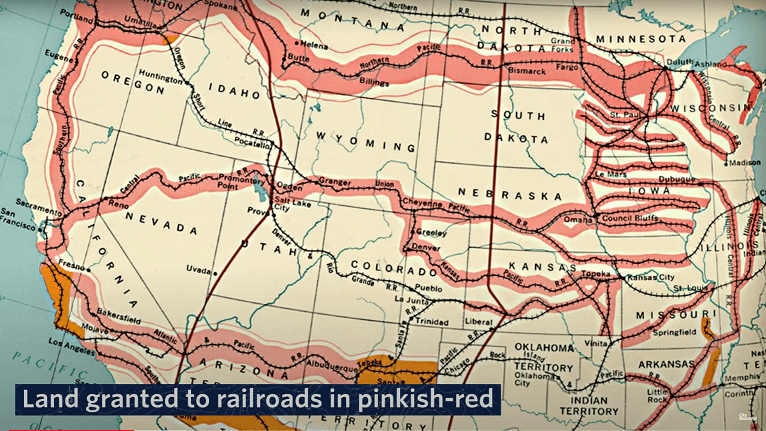
At first I thought this map was exaggerated. However, every other map I’ve seen has these same enormous swathes of land representing land granted to railroad corporations by the US Federal government.
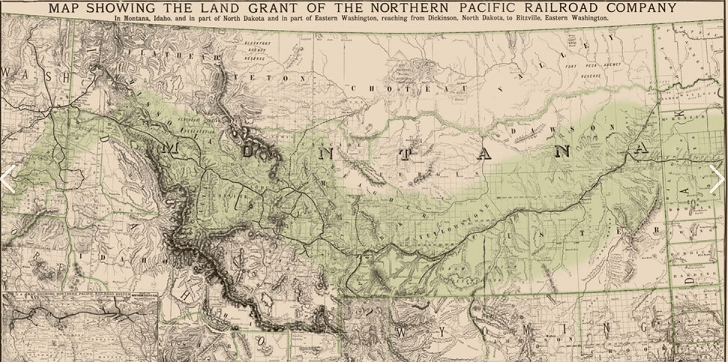
The narrative the traffic troons would have you believe is that ultra-rich railroad corporations run by robber barons with cozy relationships with the US government were totally powerless to lobby the government which they already lobbied constantly. Because of their total inability to lobby the government they couldn’t stop the government from responding to lobbying from comparatively much smaller automobile manufacturers, and this is why people stopped taking the train.
According to Adam Something, the way this lobbying manifested itself was that the evil car companies forced schools to teach children that cars are so dangerous that you need to look twice before crossing the road. If only railroad owners had the power to lobby the government and prevent schools from teaching kids that cars were really dangerous, everyone would still be taking the train.

Or maybe we would still have horse drawn carriages everywhere? See that’s the thing, once you acknowledge horsies none of this makes the slightest lick of sense.
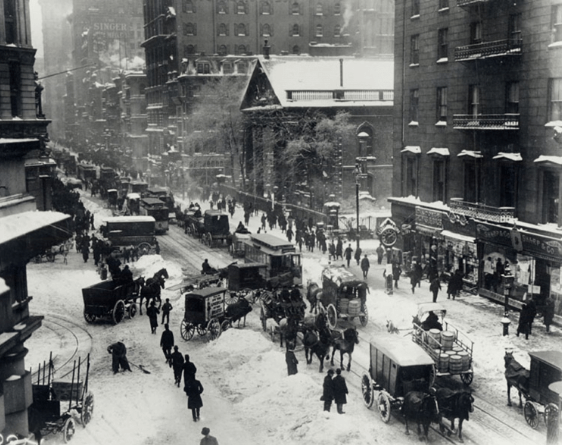
And once you acknowledge that not every street, or even most streets, was a glorious, multi-use gay fuckfestival because of horses, and that has been the case for thousands of years, it’s harder to whine about sidewalks being for cars or whatever. Before car-centric infrastructure, there was horse-centric infrastructure where hUManS wErEN’t AlLOwEd tO Go.

A lot of the traffic troons’ Just-So stories about how cars – and occasionally they’ll soyrage at planes – don’t deserve to be the dominant mode of transportation might sound moderately plausible until you zoom out and look at the big picture for one half of one second. Horses were just behind walking as the dominant form of transportation for thousands of years. We’ve had wheeled vehicles for thousands of years. We’ve had roads with sidewalks that had no pedestrian access for thousands of years.
Trains, the better rail-horse, were invented and exploded in popularity for a century. But then automobiles, the better horses, were invented, along with planes. They first few automobiles weren’t very good, but they got better and better. As they got better they took more and more market share away from horses and trains, because they were just better at the vast majority of tasks. The same was true on the high end for planes. We don’t need trains to do passenger rail, because we have things that travel at 900 kmph and go across oceans, FFS.

From the movie Marie Antoinette
I don’t mean to oversell trains disadvantages, or pretend they have no advantages. If you have relatively flat land, huge quantities of product to move, a loading station relatively close to the goods origin point (such as a grain silo or manufacturing plant), a destination station close to the products final destination, and don’t mind waiting a long time for loading, they can be a good choice. Trains can be more fuel efficient per mile, due to the low resistance of the metal wheels, and the wind resistance of the locomotive being amortized over the rest of the train, which can be miles long. They also don’t have to deal with traffic until they get close to the station.
There are some people who still use horses. That’s mostly for personal reasons, but even they have some advantages over ATV’s in areas where fuel is difficult to come by. There are some corporations who still use trains. They have their disadvantages but they can be very fuel efficient. There are some people who love riding the train. And there’s nothing wrong with your personal preference.
But both methods of transportation are in decline, and we don’t need any outlandish theories involving schoolchildren being brainwashed to understand why. Trains had their century, but it’s over. Horses had millennia, but it’s over for them too.

Automobiles are one of the greatest inventions ever, and the people who should love them most ought to be urbanists. After all, they’re the reason their cities don’t smell like manure all the time.

Although they’re working on bringing that back.














The “homeless” – doing the street shitting that horses won”t do.
I still like when adam something makes fun of elon musk’s bullshit inventions but that is mainly because not enough people do for whatever reason.